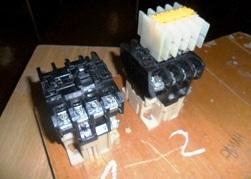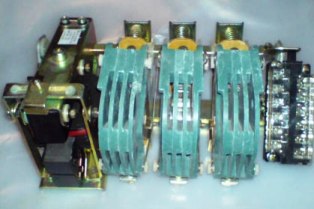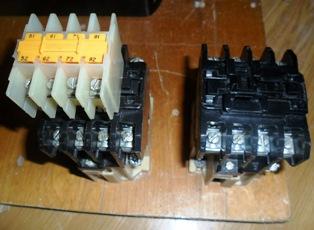Categories: Featured Articles » Electrician Secrets
Number of views: 278,663
Comments on the article: 35
What is the difference between a contactor and a starter?
 Even the most experienced adjusters of electrical equipment and just specialists with higher education can not always explain the fundamental difference between electromagnetic starter and an AC contactor. Let's try to figure it out on our own.
Even the most experienced adjusters of electrical equipment and just specialists with higher education can not always explain the fundamental difference between electromagnetic starter and an AC contactor. Let's try to figure it out on our own.
The common thing between the contactor and the starter is that both of them are intended for switching circuits, usually power ones. Therefore, contactors and starters are often used to start AC motors, as well as for input / output of resistance stages, if this start is rheostatic.
In addition to the power contacts, both the contactor and the starter necessarily include at least one (and most often far from one) pair of contacts for the control circuit: normally closed or normally open. These contactors and starters are similar. But how do they nevertheless differ?
According to the nomenclature of many trading organizations, electromagnetic starters pass as “small-sized AC contactors." So, maybe the answer to the question lies in the compactness of the starter? Indeed, it is only worth picking up a contactor and a starter with the same nominal current load, and the difference in their dimensions will become noticeable to your eyes, hands and fingers.
A modest three-pole contactor at 100 amperes is a pretty weighty thing, as they say, it can be knocked down. And the stamper starter is, of course, not a feather, but to hold it in the palm of one hand is quite realistic. In addition, it should be noted that low-current contactors, for example, at 10 amperes, are simply not released. Therefore, for switching weak circuits, it is necessary to use only starters, which differ in very small sizes. So the dimensions are really one of the differences between contactors and starters.

Fig. 1. Electromagnetic contactor KT6043 OJSC Plant "Electrocontactor"
The second difference is the design. Any contactor incorporates powerful pairs of power contacts equipped with arcing chambers. The contactor does not have its own housing and is mounted in special rooms locked with a key to prevent access by unauthorized persons and the effects of precipitation.
But the power contacts of the starter are always hidden under a plastic case, but they do not have bulky arcing chambers. This leads to the fact that, as part of powerful circuits with frequent switching, starters do not mount for fear that their contacts are less protected from a frequently occurring electric arc than AC contactors.
But the starter has a higher degree of protection of electrical equipment, especially if it is equipped with an additional metal casing. Then the starter can be installed even in the open air, which can never be done with a contactor.
The third difference between the AC contactor and the starter is their purpose. Although starters are often used to supply power to heaters, electromagnetic coils, various powerful luminaires and other electrical receivers, their main purpose is to start asynchronous three-phase AC motors.
Therefore, any starter has three pairs of power contacts, and its control contacts are designed to keep the starter in the on state and to assemble complex control circuits, including, for example, reverse start.
Fig. 2. Electromagnetic PML starters
At the same time, the contactor is designed for switching absolutely any AC power circuit. Therefore, the number of poles, that is, pairs of power contacts, at the contactor is different - from two to four.
According to these three differences, power electromagnetic switching devices of alternating current were subdivided into contactors and starters.
See also at i.electricianexp.com
:

